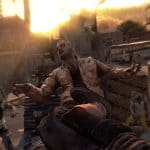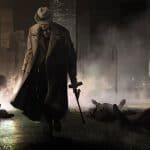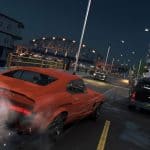Commodore Making Comeback With Smartphone That Runs Classic Games
Applications connexes
Description
15 years ago, there was still hope that the dream team behind Chrono Trigger would reunite to make another Chrono game. That hope was mostly fueled by a trademark for a game called Chrono Break, which was never officially announced. Square Enix never talked about it directly, but here and there over the years some of the developers mentioned being interested in making a sequel. It didn’t happen. But if it did, maybe it would’ve looked something like this.This mockup of Chrono Break is the work of pixel artist Simon Andersen, who created Owlboy and worked on this project as a way to wind down from its long development.
[bs-quote quote= »I like some shooters, and I respect games like Doom, but I don’t think it’s right for me. » style= »style-7″ align= »left » author_name= »Sid Meier » author_job= »American programmer » author_avatar= » »]
« After finishing a massive game project spanning a decade of development, I was ready to tackle a new series. I had already known for years I wanted to explore a hypothetical sequel to Chrono Trigger, Cross and Radical Dreamers, but it took me a full year until I figured out how I wanted it to look, » he wrote.
Andersen makes it as clear as possible that this is not an actual game project in development,
and that’s for the best—Square famously shut down a Chrono Trigger fangame,back in 2004. Andersen’s video is just a mockup, which he’s been working on for the past two months. « If the sequel that was planned years ago was revived, this is likely how I would do it. » Even so, it’s nice to think about what could have been, in the alternate timeline where Chrono Trigger got another sequel. Especially one with such beautiful pixel art, which feels rooted in the original game’s style but with far more detail than the Super Nintendo was capable of.Release day for an indie developer sounds like it’d be a celebration. Years of work have finally reached a successful conclusion. They can sit back, relax, and wait for the adulation and money to roll in. But it’s not really like that.
“I heard a lot of people speculate what this would feel like and I was never really sure what would happen when we finally hit launch,” says Simon Stafsnes Andersen, head of Owlboy maker D-Pad Studio. “The reality was … conflicting.”
“The final push was probably some of the most emotionally draining and turbulent months of the entire nine-year development cycle,” Andersen says of the final few months working on Owlboy. He and his four-strong team worked practically every waking hour to make the deadlines for its physical release. “We were all really burned out by the time we were close to the finish line and it in many ways didn’t feel like it was going to be real. We didn’t have time to feel anything at that point. Our only concern was to deliver on what we had set out to do.”
The truth is that launch is not an end. It’s the start of something else, and with that fresh start come many struggles that are born in the intensity of game development. This is true for almost all modern game developers, but it’s especially dramatic for indies who have spent half a decade or more quietly working on their dream project. After you’ve put all of yourself into a game, what comes next?
Eric ‘ConcernedApe’ Barone felt much the same. Stardew Valley’s four-and-a-half years development ended with him working 12-hour days, seven days a week, and he was fixing bugs and making last-minute changes right up to the end. “I remember staying up all night shortly before launch day in order to fix a major bug that would’ve ruined it.”
But not all crunch is specifically about work hours. Ben Porter is programmer, designer and art director of MoonQuest, a platformer with Terraria-style exploration and crafting in distinctly weird generated environments. He managed to work nine-to-five days before its July Early Access release, but after six years, he was exhausted—and also a new dad. “Luckily my daughter had started to sleep through the night so I started to get more rest and could concentrate for longer,” he says. But final rounds of testing threw up all kinds of unanticipated new issues that had to be fixed.




